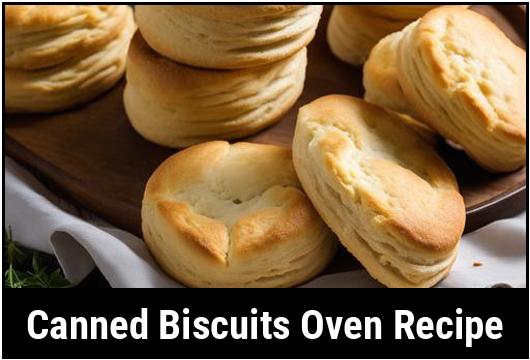
The Ultimate Guide To Perfectly Baked Canned Biscuits: Elevating Your Baking Game
Biscuits, an all-time favorite comfort food, hold a special place in our hearts. Whether indulging in biscuits for breakfast, as a side dish, or deliciously crafted desserts, there is something truly delightful about that warm, flaky, and buttery goodness. Though the thought of slaving away in the kitchen may seem intimidating, fear not! This comprehensive guide will equip you with all the necessary knowledge and insider tips to elevate your biscuit game with canned biscuits. From selecting the perfect can to achieving the ideal texture, we will explore every aspect of this beloved recipe.
Understanding the Food Science Behind Canned Biscuits
Before diving into the specifics, it’s essential to understand the food science behind canned biscuits, as this knowledge forms the foundation for achieving outstanding results.
Canned biscuits are a convenience-based alternative to traditional homemade biscuits that require hours of preparation and rising time. They consist of pre-made dough that has been partially cooked and canned for easy storage. The dough is typically made using a combination of flour, leavening agents (such as baking powder or baking soda), a fat source (often vegetable shortening), sugar, salt, and sometimes flavors like buttermilk powder or vanilla extract.
The leavening agents play a crucial role in creating those delightful pockets of air that give biscuits their characteristic flakiness. When the dough heats up in the oven, the heat causes the leavening agents to release carbon dioxide gas, expanding the dough and creating a light, tender texture. The fat contributes to the biscuits’ richness and helps create layers by separating the dough’s layers as it melts during baking.
Selecting the Perfect Can of Biscuits
When it comes to selecting canned biscuits, a few factors come into play. Considering these aspects will help you choose the ideal can for your dish.
1. Brand: With countless brands available on the market, it’s essential to stick with reliable and reputable ones. Brands like Pillsbury, Annie’s, or Mary B’s have consistently delivered quality biscuits with a variety of flavors and options.
2. Flavor and Texture: Canned biscuits come in various flavors and textures. From classic buttermilk to flaky layers or extra buttery variations, each option provides a distinct taste and texture. Consider the flavor profile of your dish and select accordingly.
3. Size and Quantity: Different brands offer different sizes and quantities within each can. Whether you’re baking for a crowd or looking for smaller portions, ensure that your chosen can matches your desired outcome.
4. Specialty Options: Some brands also offer specialized biscuits, such as honey butter, garlic, or sweet cinnamon rolls. These provide exciting twists and expand your options for incorporating biscuits into a wider range of recipes.
Cleaning and Preparing Your Baking Equipment
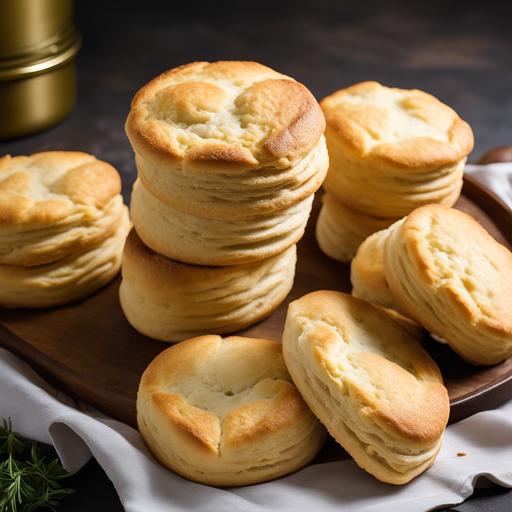
Before diving into the biscuit-making process, it’s vital to ensure your baking equipment is clean, in excellent condition, and ready to go.
1. Baking Sheet or Pan: Ensure your baking sheet or pan is clean, without any grease or residue from previous baking. Non-stick baking sheets are highly recommended for best results, as they minimize sticking and help achieve even browning.
2. Parchment Paper or Silicone Mat: For a hassle-free baking experience, line your baking sheet with parchment paper or a silicone mat. This precautionary step prevents biscuits from sticking to the pan and makes for easier cleanup.
3. Oven Calibration: Preheat your oven according to the can’s instructions, ensuring the temperature is accurate. A well-calibrated oven is key to even baking and prevents overcooking or undercooking.
Tips for Achieving Biscuit Perfection
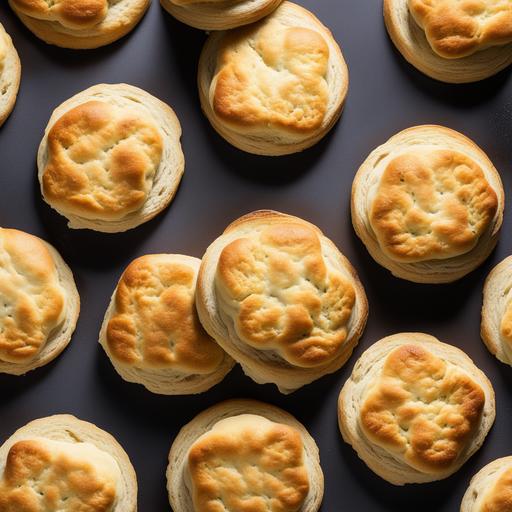
While canned biscuits make your baking experience easier, a few essential tips will elevate your biscuits to the next level.
1. Don’t Overhandle the Dough: Overmixing or excessively handling the dough can lead to tough biscuits. Gently knead or fold the dough just until it comes together; this ensures a tender texture.
2. Use Cold Ingredients: Unless the recipe specifies otherwise, using cold ingredients (such as chilled butter or milk) helps create pockets of steam as they heat up in the oven, contributing to flakiness.
3. Maintain a Hot Oven: Once your biscuits are ready to go in the oven, make sure it is preheated to the proper temperature. A hot oven enables the leavening agents to work effectively, resulting in maximum rise and fluffiness.
4. Avoid Crowding the Biscuits: Ensure there is enough space between biscuits on the baking sheet to allow air circulation. Crowding them can lead to uneven baking and might prevent achieving a golden-brown crust.
5. Keep an Eye on the Clock: Every oven behaves slightly differently, so it’s crucial to monitor baking time. Undercooked biscuits may result in a doughy center, while overcooked ones become dry and hard. Look for a golden-brown color and feel for a firm, but slightly yielding top when touched.
Variations to Spice Up Your Canned Biscuit Experience
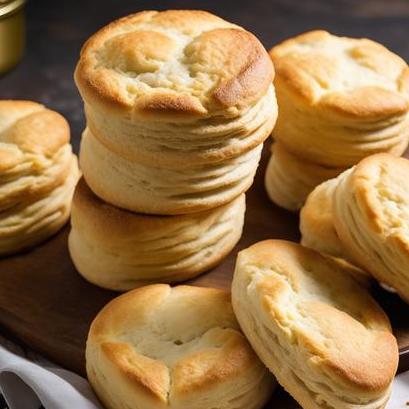
Biscuits possess incredible versatility and can be transformed into delightful dishes or enjoyed on their own. Consider these variations to expand your canned biscuit repertoire.
1. Cheesy Garlic Biscuits: Brush your biscuits with melted butter, sprinkle them with garlic powder and shredded cheddar cheese before baking. The result is a mouthwatering treat that pairs perfectly with soups or as a standalone appetizer.
2. Strawberry Shortcake: Slice your baked biscuits in half horizontally, fill them with fresh strawberries and sweetened whipped cream. This classic dessert is a heavenly way to showcase the biscuit’s flaky texture and buttery flavor.
3. Sensational Sliders: Flatten individual biscuit dough portions, and bake them until golden brown. Once cooled, slice them in half and add mini burger patties or sandwich fillings of your choice.
4. Biscuit Breakfast Bake: Tear apart pre-baked biscuits and layer them in a casserole dish with cooked bacon, eggs, shredded cheese, and seasonings. Bake until the eggs are set and cheese has melted for a hearty breakfast treat.
Checking for Doneness: The Golden Rule
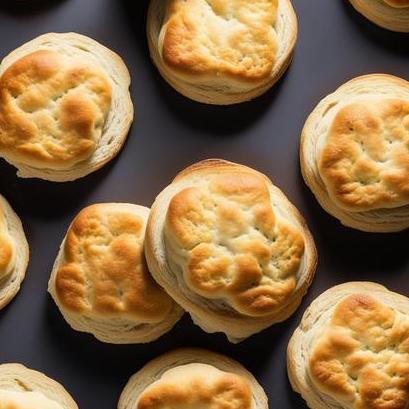
To ensure your biscuits are perfectly cooked, use these visual cues to guide you.
1. Golden Brown Crust: The top and bottom of the biscuits should have a uniform golden-brown color. This indicates that the biscuits have achieved a deliciously crisp outer layer while maintaining a soft and fluffy interior.
2. Slightly Firm Top: Gently press the top of a biscuit with your finger. It should yield slightly, indicating a perfectly cooked and tender crumb.
3. Biscuit Height and Fluffiness: A well-risen biscuit should boast a significant amount of height and be noticeably fluffy. You should be able to see distinct layers when you split the biscuit open.
The Canned Biscuit Oven Recipe Extravaganza
Now that you’ve absorbed all the nuances and possibilities, let’s dive into a simple yet tantalizing canned biscuit oven recipe to showcase your skills.
Southern Style Buttermilk Biscuits:
Preparation Time: 10 minutes
Cooking Time: 12-15 minutes
Yields: 8 biscuits
Ingredients:
-
2 cups all-purpose flour
-
1 tablespoon baking powder
-
1 teaspoon salt
-
1/4 cup chilled butter, cut into small pieces
-
3/4 cup cold buttermilk
Instructions:
-
Preheat your oven to 425°F (220°C). Prepare your baking sheet with parchment paper or a silicone mat.
-
In a large mixing bowl, whisk together the flour, baking powder, and salt until well combined.
-
Add the chilled butter pieces to the dry ingredients. Gently blend the butter into the flour mixture using a pastry cutter or your fingertips until it resembles coarse crumbs.
-
Slowly pour in the cold buttermilk while stirring the mixture with a spatula or wooden spoon until the dough starts to come together. Avoid overmixing.
-
Transfer the dough onto a lightly floured surface. Knead the dough gently, folding it over itself a few times until it is cohesive and holds its shape.
-
Roll out the dough until it is about 1/2-inch thick. Use a round biscuit cutter or a drinking glass with a smooth rim to cut out biscuits from the dough.
-
Place the biscuits onto the prepared baking sheet, leaving some space between each biscuit.
-
Bake in the preheated oven for 12-15 minutes or until the biscuits have a beautiful golden-brown color on the top and bottom.
-
Remove from the oven and let them cool slightly before serving.
Pro Tip: To add an extra golden sheen and buttery flavor to your biscuits, brush the tops with melted butter right after they come out of the oven.
Avoiding the Pitfalls of Overcooked or Undercooked Biscuits
Overcooked and undercooked biscuits are a common occurrence that can be easily avoided by keeping a few key aspects in mind.
1. Check the Baking Time: Follow the suggested baking time mentioned in your recipe as a general guideline. Keep an eye on the biscuits in the last few minutes to ensure they don’t overcook.
2. Oven Temperature Accuracy: Use an oven thermometer to verify that your oven is heating to the correct temperature. A malfunctioning oven thermostat can lead to uneven baking.
3. Adjustments for Altitude or Humidity: If you live in a high-altitude location or a region with high humidity, you may need to make slight adjustments to the baking time or temperature to achieve optimal results. Experimentation may be necessary to fine-tune your biscuits.
Exploring the World of Biscuits: A Journey of Culinary Delights
Canned biscuits are a versatile base that can inspire a wealth of culinary creations. Let’s explore some key areas where biscuits can truly shine.
1. Savory Stuffed Biscuits: Create delicious stuffed biscuits by adding fillings like bacon, cheese, sausage, or vegetables. Encase the fillings within the dough before baking and revel in a savory surprise once you take a bite.
2. Biscuit Pizzas: Flatten biscuit dough to create a mini pizza crust. Top it with your favorite sauce, cheese, and toppings. Bake until bubbly and golden, allowing yourself to indulge in a quick and easy pizza fix.
3. Biscuit-Topped Casseroles: Replace traditional crusts or dumplings in casseroles with biscuit dough. Place portions of dough on top of the casserole filling and bake until the biscuits become golden and cooked through.
4. Sweet Biscuit Desserts: Embrace the versatility of biscuits by crafting delectable desserts. From strawberry shortcakes and cobblers to fruit-filled turnovers or monkey bread, there are countless ways to incorporate biscuits into your favorite sweet treats.
Congratulations! You’ve now embarked on a journey that will undoubtedly elevate your biscuit-making skills. Armed with a complete understanding of the science, a selection guide, invaluable tips, creative variations, and an irresistible recipe, your canned biscuit oven adventures are sure to impress. So grab a can of biscuits, preheat that oven, and let your culinary imagination take flight. It’s time to enjoy the fluffy, buttery goodness that canned biscuits have to offer!
Sources
FAQS On Canned Biscuits Oven Recipe
What Are Canned Biscuits?
Canned biscuits are pre-made biscuit dough that comes in a can. They are a convenient and easy way to make biscuits without having to start from scratch.
How Do I Bake Canned Biscuits In The Oven?
To bake canned biscuits in the oven, preheat the oven to the recommended temperature on the package. Take the biscuits out of the can and place them on a baking sheet or in a baking dish. Bake for the recommended time, or until the biscuits are golden brown on top.
Can I Add Any Extra Ingredients To My Canned Biscuit Dough?
Yes, you can add extra ingredients to your canned biscuit dough to give it more flavor. Some popular options include adding cheese, herbs, or spices to the dough before baking.
How Long Do Canned Biscuits Last In The Fridge?
Canned biscuits can last up to two weeks in the fridge as long as they remain unopened. Once the can has been opened, the biscuits can last up to one week in the fridge.
Can I Freeze My Canned Biscuit Dough?
Yes, you can freeze your canned biscuit dough for up to six months. To do so, take the dough out of the can and wrap it in plastic wrap or aluminum foil. Place it in a freezer-safe bag and store in the freezer until ready to use. When you’re ready to bake the biscuits, let them thaw in the fridge overnight before baking.


